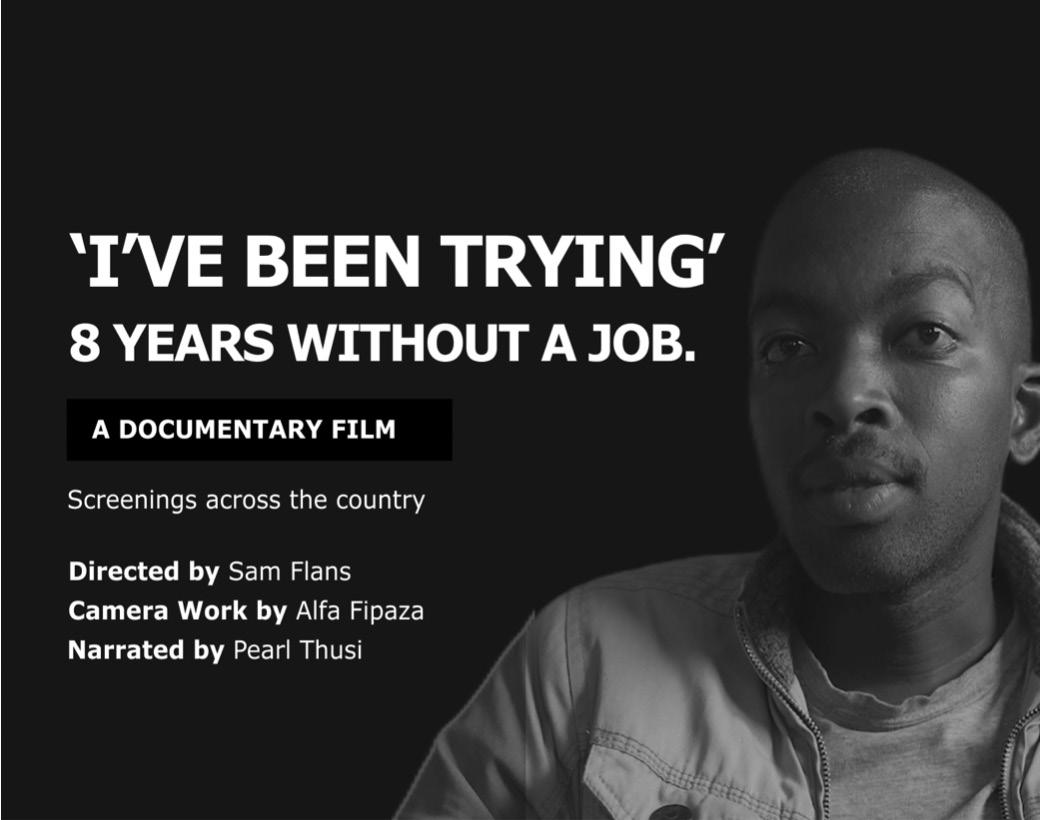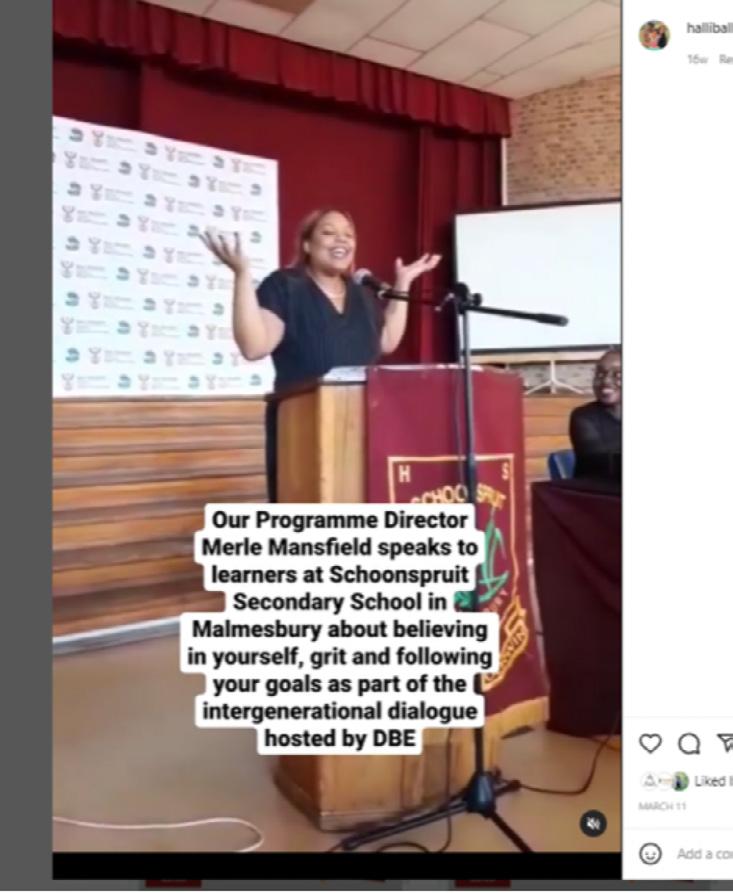
4 minute read
LESSONS FROM OTHER DGMT-FUNDED INITIATIVES USING THE POWER OF DIGITAL COMMUNICATION
Know Your Target Audience 1
Nal’ibali is a national reading-for-enjoyment campaign, targeting children aged 1–10. Athenkosi Matyalana, Nal’ibali’s digital specialist, says his approach is informed by target audience research and engagement with the Nal’ibali network, as well as social media users.
Matyalana explains: “Through audience research, I was able to gather information about the digital behaviour of Nal’ibali’s target audience, which informs the type of content that we create as well as the language and tone we use.”
Nal’ibali’s top tips for making the most of digital platforms:
› CONDUCT AUDIENCE RESEARCH: if you know your audience doesn’t respond to emails, you should rather use SMS. If you know they prefer visuals, don’t use SMS, use Instagram.
› INNOVATE: this can cost less than you think, e.g. serving content by WhatsApp is cost-effective and is a widely used communication tool.
› MONITOR AND EVALUATE (M&E): use Google Analytics to measure how your audiences respond to your website content. This tells you what is working and what isn’t – data doesn’t lie! Other tools recommended for M&E:
› TWEETDECK is useful for monitoring conversations about you and topics associated with your organisation on Twitter.
› FANPAGE KARMA can help to monitor behaviour and trends on Twitter, Instagram and Facebook.
Digital channels and digital campaigns play an essential role in raising awareness about the systemic factors that deepen youth unemployment. Most recently, Youth Capital, a national campaign advocating for solutions to youth unemployment, developed a short documentary about the challenges of finding a job. The Youth Capital team knew that to create a buzz around the film, they had to draw on their network of young people to screen the documentary at various community-based events around the country. In essence, the film went on tour, run by Youth Capital’s own network.
› MAILCHIMP has built-in tools for monitoring uptake of your newsletters.
Figure 5: Documentary screenings use digital media to mobilise young people

Clotilde Angelucci, communications and network strategist for Youth Capital, explains that on Youth Day (16 June 2022), young people were encouraged to mobilise at least 10 other young people using the resources available to them, e.g. by hosting a documentary screening at home, which made the call for mobilising in their communities realistic and achievable. Events and social media livestreams12 also generated an increase in traffic to Youth Capital’s website (see Figure 6).

Once you have successfully grabbed your audience’s attention, the common challenge is to hold it over the long run. Angelucci acknowledges that retaining someone’s attention long after they attended a digital livestream or in-person event is a challenge. Overcoming this hurdle requires developing curated audience journeys aimed at soliciting higher levels of engagement over a sustained period.
3 CREATE SCROLL-STOPPING CONTENT
Repurpose Traditional Media Content For Social Media 4
Audiovisuals13 are a good way of using content you already have, says Kendra Stewart, communications officer for the Zero Dropout Campaign. “Most of us in the advocacy space are doing radio interviews as part of our awareness-raising efforts. Now, we can merge traditional media content with new media by repurposing radio interviews into sound bites for Twitter, Instagram, Facebook and LinkedIn. It’s a win-win.”
Microvisual (reels) are also popular, particularly those with motivational themes. Stewart explains: “Reels garner a wider reach on Instagram, while visual clips from TV interviews tend to perform better on social media than static images.”

“There is so much content being pumped through these systems and it is important to develop scroll-stopping storytelling in every campaign that you run.”
Emma O’Shaughnessy, digital communications specialist, AMC
Storytelling can help a campaign to capture the hearts and minds of its target audience. O’Shaughnessy expands: “People don’t simply make decisions based on rational thought alone. Their feelings play a major role in their decision-making processes. Even a serious campaign that has legal implications should speak to the emotional reasons why someone should care about a campaign’s call to action.”
O’Shaughnessy says creative content and storytelling are critical; we must keep challenging ourselves to innovate with content, not just through calls to action, but also solution-based messaging.
Consistency Is Key 5
“I see a lot of people trying to do once-off campaigns that don’t really land with their audiences. But the more consistently you campaign around a topic or a theme, the more trustworthy you become,” says O’Shaughnessy.
It is important to remember that building responsiveness to campaigns happens gradually. It is tricky to have a successful campaign with a once-off run of content, as relationships take time to build and nurture. Often the hard work in a campaign happens behind the scenes once somebody has responded to a call to action. Helping them participate in the campaign in valuable ways is often done one-on-one, which requires time and effort. O’Shaughnessy adds, “If you are going to be running a campaign, be prepared to engage and manage those conversations actively. It is a big part of any campaign’s journey.”
Allocate A Budget 6

Don’t skimp on communications, but you don’t have to break the bank. “It is difficult to get the kind of reach and engagement on social media that you want if you don’t spend a bit of money,” says O’Shaughnessy.
“You don’t have to spend a lot of money, especially on places like Facebook and Instagram, since microbudgets go really far. For instance, you can reach tens of thousands with a few hundred rand,” she explains.

Managing spend and seeing the value in one’s spending becomes easier once you begin tracking calls to action, outcomes and connect them to real-life impact. If you are running an awareness campaign with no action, it is hard to see the value of the money invested, besides the fact that you have reached many people.
CHANGE IS IN THE AUDIENCE’S HANDS
Digital technology can be used to drive changes in human behaviour for the benefit of all South Africans. However, the success of any digital campaign depends on the relationship between the campaign and the target audience and the campaign’s ability to retain that audience. Civil society organisations must offer a compelling narrative and a reason to get involved in their campaigns. As O’Shaughnessy concludes: “If you tell people how and why their contribution will lead to tangible change, they are more likely to feel motivated, to engage and to stay.”







